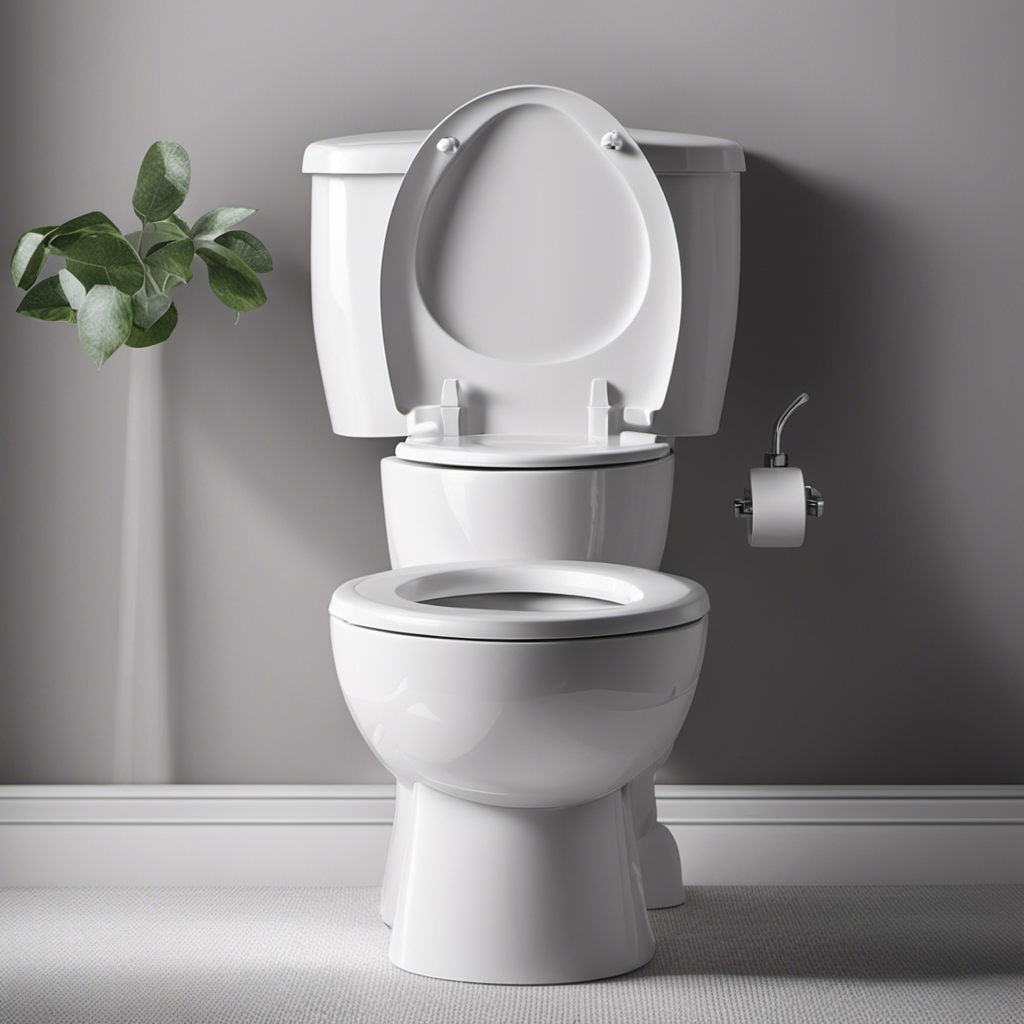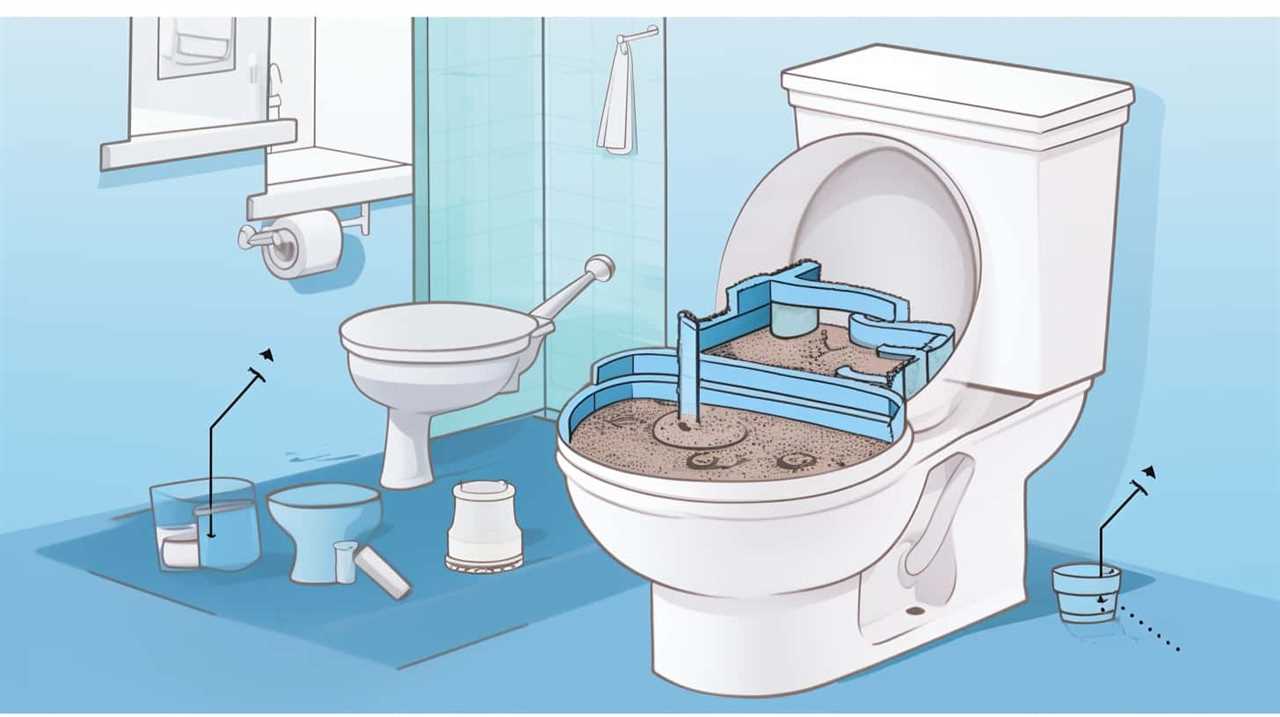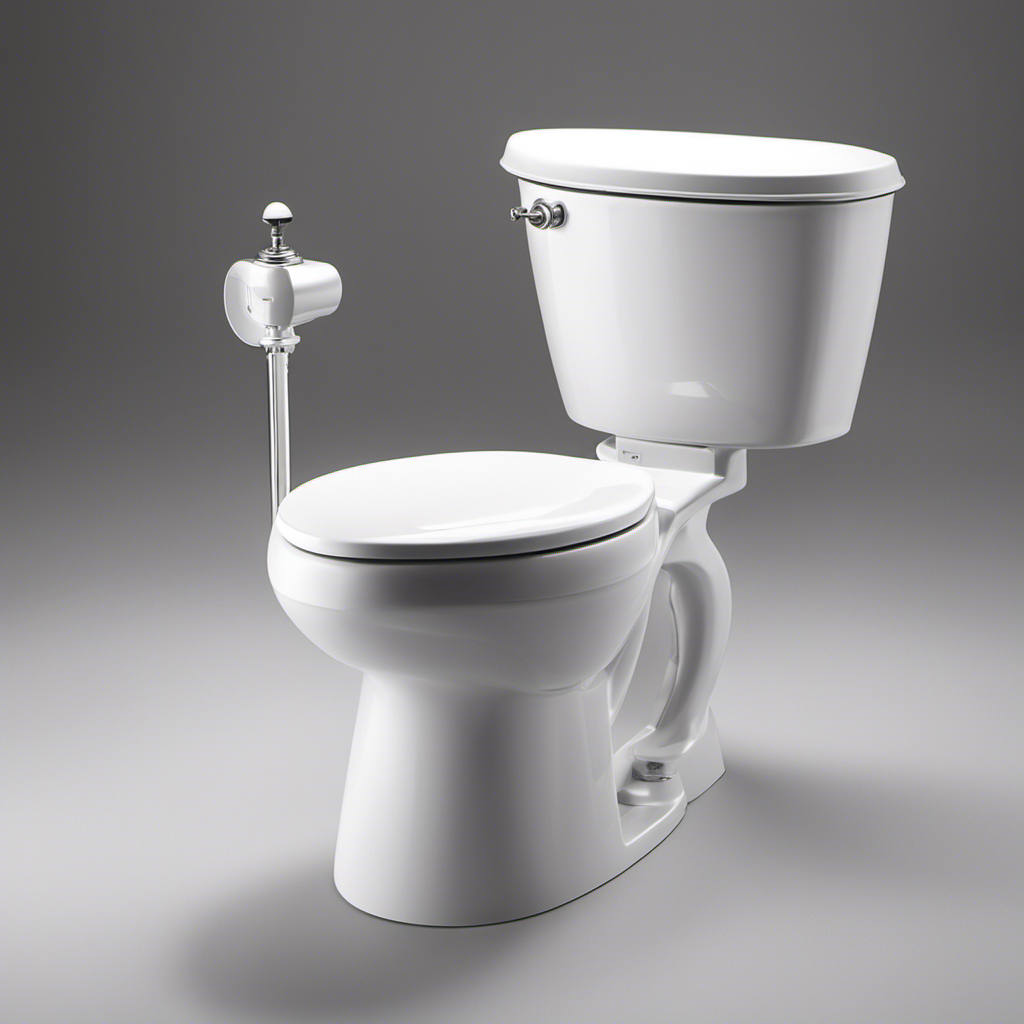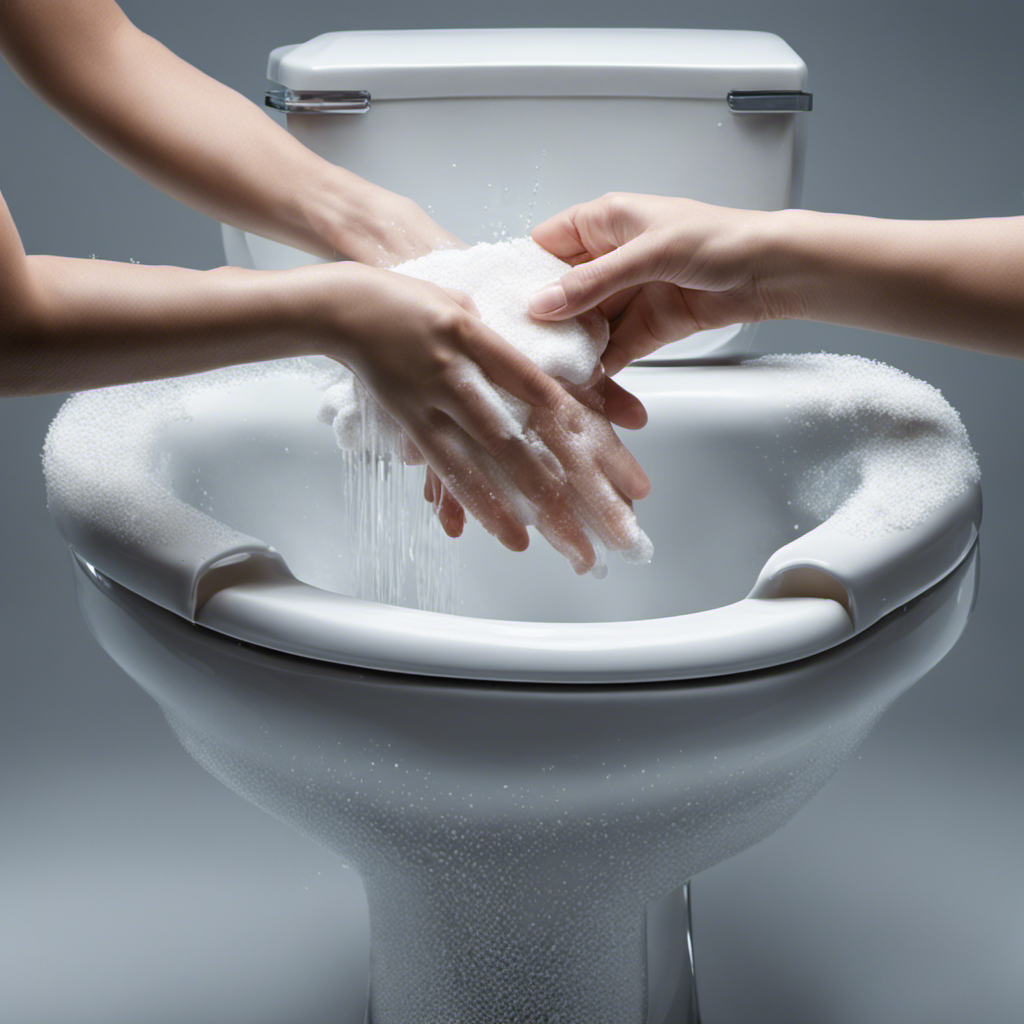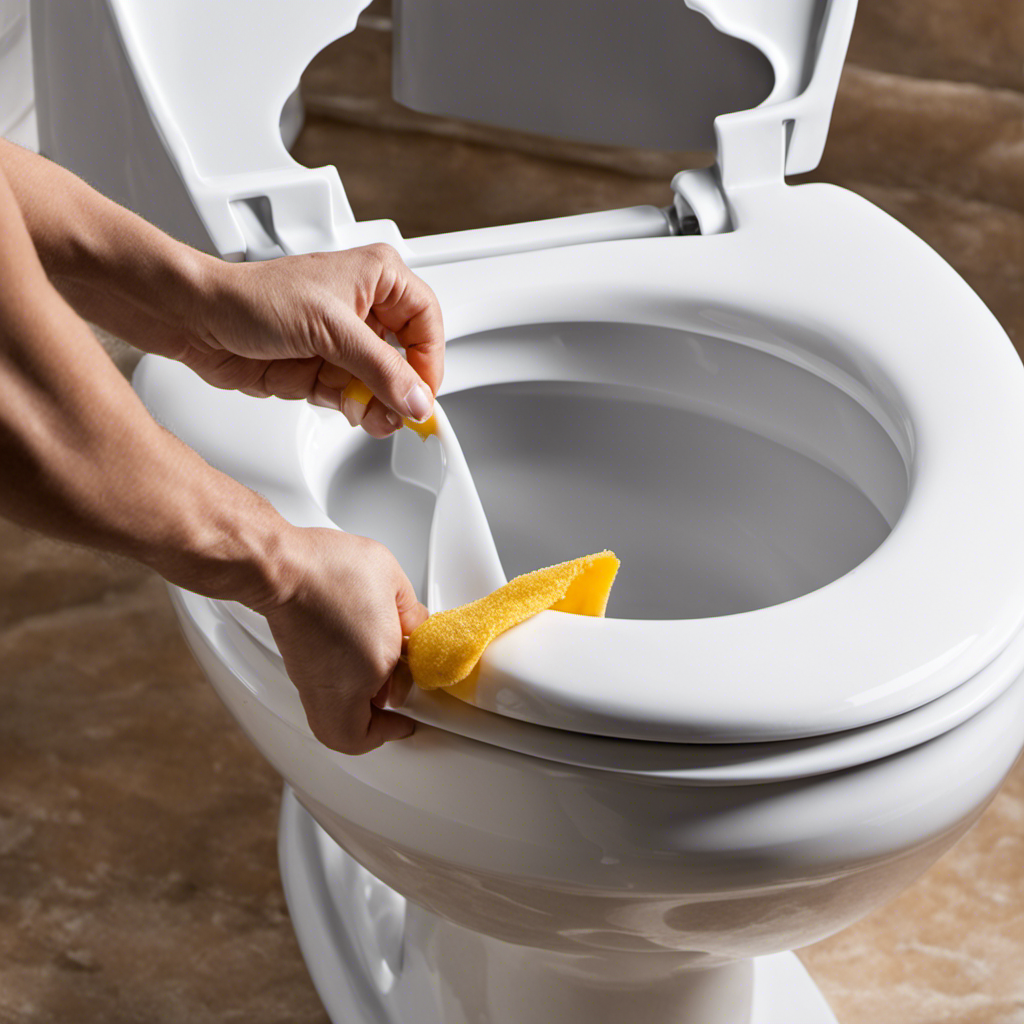I’ve been there before – standing in front of a toilet bowl with a frustratingly low water level. It’s not just a minor inconvenience, but it can also be a sign of underlying issues.
In this article, we’ll dive into the causes, identification, and solutions for a toilet bowl with low water level. From cracked bowls to clogged air vents, we’ll explore all the possibilities.
So if you’re ready to troubleshoot and restore your toilet’s water level, let’s get started.
Key Takeaways
- Cracks in the toilet bowl and clogs in the air vent are common causes of low water level in the toilet bowl.
- To identify the cause of the low water level, check the tank water level, listen for gurgling sounds, and conduct a water level test.
- To fix a toilet bowl losing water, replace the toilet bowl if there is a crack, close the main water supply line, uninstall the old toilet bowl and install a new one, and ensure proper fitting.
- Cleaning the air vent involves taking precautions, using a garden hose or toilet auger, and pouring water to clean the entire vent.
Common Causes of Low Water Level in a Toilet Bowl
One common cause of low water level in a toilet bowl is a crack in the bowl. Cracks can occur due to age, wear and tear, or even improper installation. When a crack is present, water can leak out, causing the water level in the bowl to decrease.
To prevent this issue, regular toilet bowl maintenance is essential. Inspecting the bowl for any cracks and addressing them promptly can help maintain the proper water level.
Additionally, practicing water conservation tips can also prevent low water levels in the toilet bowl. These tips include using a low-flow toilet, avoiding excessive flushing, and fixing any leaks or running toilets promptly.
Identifying the Cause of Low Water Level
When checking for the cause of the low water level, I can listen for gurgling sounds or conduct a water level test. This will help me identify the specific issue and take appropriate action to increase the water level in the toilet bowl.
Maintaining a proper water level in the toilet bowl is important for several reasons. Firstly, it ensures optimal flushing efficiency, preventing any waste from being left behind. Secondly, it helps prevent odors from escaping the sewer line into the bathroom. Additionally, maintaining a proper water level helps prevent potential damage to the toilet bowl and surrounding areas.
Fixing a Toilet Bowl With Low Water Level
To fix a toilet bowl that is losing water, there are several steps you can take. First, you should replace the cracked bowl. Additionally, it is important to close the main water supply line and install a new one to ensure proper fitting.
Preventing water loss is crucial to avoid various consequences that can arise from a low water level in the toilet bowl. These consequences include wasted water resources, higher water bills, potential damage to the bathroom floor, increased risk of mold and mildew growth, and decreased toilet flushing efficiency.
Cleaning the Air Vent in a Toilet Bowl
I can clean the air vent in my toilet bowl by using a garden hose or a toilet auger if necessary. However, before attempting to clean the air vent, it is important to take certain precautions to ensure safety.
Here are some precautions for cleaning the air vent:
- Turn off the water supply to the toilet to avoid any accidental flooding.
- Wear protective gloves and goggles to protect yourself from any potential debris or splashes.
- Use a plunger to unclog the air vent before attempting to clean it with a garden hose or toilet auger.
- Be cautious when using a toilet auger, as it can be quite powerful. Follow the manufacturer’s instructions carefully to avoid any damage to the vent or the toilet.
Other Issues Related to Low Water Level in a Toilet Bowl
One possible solution for insufficient water in the tank is adjusting the fill valve. This is a common issue that can result in a low water level in the toilet bowl. Ignoring this problem can have serious consequences.
Firstly, it leads to wasted water resources and higher water bills. Secondly, it can potentially cause damage to the bathroom floor due to continuous leakage. Additionally, a low water level increases the risk of mold and mildew growth, which can be harmful to health. Moreover, it decreases the toilet flushing efficiency, leading to multiple flushes and water wastage.
To prevent these consequences, it is important to address the issue of low water level in the toilet bowl promptly. Regular maintenance and inspection can help in preventing toilet bowl water loss and ensuring the efficient functioning of the toilet.
Frequently Asked Questions
Can a Low Water Level in the Toilet Bowl Be Caused by a Problem With the Water Supply Line?
Yes, a low water level in the toilet bowl can be caused by a water pressure issue or a faulty fill valve. It’s important to check these components when troubleshooting the problem.
Is It Possible for a Clogged Sewer Line to Cause a Low Water Level in the Toilet Bowl?
Yes, a clogged sewer line can cause a low water level in the toilet bowl. It restricts the flow of water, preventing it from filling up properly. This can result in decreased flushing efficiency.
What Should I Do if I Notice Water Leaking From the Base of the Toilet?
If I notice water leaking from the base of the toilet, I would first turn off the water supply at the shut-off valve. Then, I would inspect the wax ring for damage and replace it if necessary.
Can a Faulty Flapper Valve Contribute to a Low Water Level in the Toilet Bowl?
Yes, a faulty flapper valve can contribute to a low water level in the toilet bowl. When the flapper fails to seal properly, water can continuously leak from the tank, causing a decrease in the bowl’s water level.
Are There Any Temporary Fixes I Can Try Before Replacing the Entire Toilet Bowl?
Before replacing the entire toilet bowl, you can try temporary solutions like adjusting the water level in the tank. This may involve adjusting the fill valve or fill tube to increase the amount of water in the bowl.
Conclusion
In conclusion, troubleshooting a toilet bowl’s low water level requires careful examination of its possible causes and implementing effective solutions.
By identifying and addressing issues such as cracks, clogs, and malfunctions in the fill tube or valve, one can restore the optimal water level.
Cleaning the air vent and conducting regular maintenance also play a crucial role in preventing water loss and maintaining the efficiency of the toilet.
By following these steps, one can ensure a smoothly functioning toilet bowl and avoid unnecessary water wastage and potential damage.
